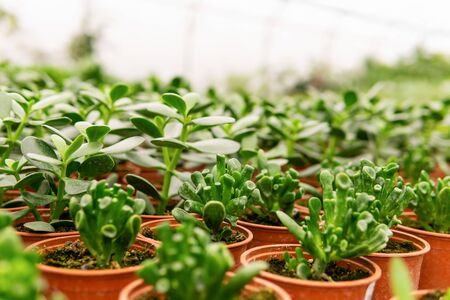Introduction to Aloe Vera in India
Aloe Vera, known locally as “Ghritkumari” in Hindi and by various names across different Indian languages, has been an integral part of Indian households for centuries. Revered for its medicinal properties and spiritual significance, Aloe Vera finds mention in ancient Ayurvedic texts and is a common sight in home gardens throughout the country. Traditionally, Indian families have relied on Aloe Vera not just for its soothing gel used to heal skin ailments, but also as a natural remedy for digestive issues, immunity boosting, and even as a beauty enhancer. Its versatility makes it suitable for daily rituals, from applying fresh gel on minor burns to mixing it with herbal powders for homemade face packs. Over generations, Aloe Vera has become deeply woven into the fabric of Indian wellness practices, reflecting both the wisdom of nature and the sustainable ethos of traditional living. As the demand for organic and home-grown remedies rises across India’s diverse climate zones, choosing the best Aloe Vera varieties suited for local conditions is essential to ensure optimal growth and maximum benefits.
2. Key Factors Affecting Aloe Vera Growth in Indian Climate
India’s vast landscape is home to a rich diversity of climatic zones, ranging from arid deserts to humid coastal regions and fertile plains. Understanding how these unique environments influence Aloe Vera cultivation is essential for choosing the right variety and ensuring sustainable, healthy growth. Below, we discuss the main climatic zones in India and highlight the environmental factors that are crucial for successful Aloe Vera farming.
India’s Major Climatic Zones
| Climatic Zone | Main Regions | Key Features |
|---|---|---|
| Arid & Semi-Arid | Rajasthan, Gujarat | High temperatures, low rainfall, well-drained sandy soils |
| Tropical Wet & Dry | Maharashtra, Madhya Pradesh, Telangana | Moderate rainfall, hot summers, dry winters |
| Tropical Wet (Humid) | Kerala, West Bengal, Assam | Heavy monsoon rains, high humidity, warm climate year-round |
| Subtropical & Temperate Hills | Himachal Pradesh, Uttarakhand | Mild summers, cold winters, moderate rainfall |
Essential Environmental Conditions for Healthy Aloe Vera Growth
- Sunlight: Aloe Vera thrives best in areas receiving 6-8 hours of sunlight daily. Too much shade can stunt growth and reduce gel quality.
- Temperature: Ideal range is between 20°C to 35°C. Extreme cold or frost can damage or kill the plant.
- Soil Type: Sandy loam with good drainage is optimal. Heavy clay soils should be avoided as they retain too much moisture.
- Watering: Drought-tolerant but sensitive to waterlogging. Water only when the topsoil feels dry.
- Humidity: Moderate humidity is ideal; excessive humidity increases the risk of fungal diseases.
- Pest & Disease Management: Natural methods like neem oil sprays or intercropping with marigolds help maintain plant health without chemical inputs.
Sustainable Cultivation Practices Tailored to Indian Conditions
Aloe Vera adapts well to eco-friendly practices such as organic mulching with coconut husks or leaf litter, use of vermicompost for soil nutrition, and rainwater harvesting for irrigation. Understanding your local climate and following these natural methods will not only boost yield but also support long-term soil fertility and ecosystem health.

3. Top Aloe Vera Varieties Suited for Indian Regions
When it comes to growing aloe vera in India, choosing the right variety is essential for achieving healthy growth and abundant yields. The diverse climates across the country—from humid coastal belts to dry inland plains—demand varieties that can adapt to these unique weather conditions. Below, we detail some of the most recommended aloe species that have proven to thrive across Indian regions.
Aloe barbadensis Miller (Ghritkumari)
This is the most widely cultivated variety in India and globally recognized for its medicinal and cosmetic uses. Aloe barbadensis Miller, commonly known as Ghritkumari in Hindi, is valued for its thick, fleshy leaves filled with nutrient-rich gel. Its high tolerance to heat and drought makes it ideal for tropical and sub-tropical parts of India such as Rajasthan, Gujarat, Maharashtra, and Andhra Pradesh. Farmers prefer this species due to its resilience and the commercial value of its gel and juice.
Aloe indica
Aloe indica is another species well-adapted to Indian soils and climates. This variety is particularly suited for eastern states like West Bengal, Odisha, and Assam where rainfall is more abundant. It grows well in slightly acidic soils and can handle moderate humidity levels. While its gel yield is somewhat lower than barbadensis, Aloe indica is often used locally in traditional ayurvedic remedies and home gardens.
Other Noteworthy Aloe Species
Besides these main varieties, there are several other types of aloe that can be considered by Indian growers:
Aloe vera Chinensis
This variety is smaller in size but adapts well to both indoor and outdoor settings, making it a popular choice for urban gardeners in cities like Bengaluru, Delhi, and Chennai.
Aloe perryi
Known for its bitter sap, Aloe perryi can tolerate arid conditions similar to those found in parts of Telangana and Madhya Pradesh. It requires minimal water once established and can flourish even in poor soil.
Aloe aristata
Sometimes called “Lace Aloe,” this ornamental variety performs best in cooler hill stations such as Ooty or Shimla. It is mainly grown for decorative purposes but also carries mild medicinal properties.
By selecting aloe vera varieties matched to your local climate—whether you’re cultivating on a large scale or maintaining a home garden—you ensure better plant health, richer harvests, and support sustainable farming practices rooted in Indian tradition.
4. Comparing Aloe Varieties: Features and Benefits
Choosing the right aloe vera variety for Indian conditions can make a significant difference, whether you are planning a home garden in Kerala or a commercial farm in Rajasthan. The following comparison highlights key aspects such as leaf size, gel quality, medicinal properties, and yield, all of which should be considered to ensure healthy and sustainable growth.
| Aloe Vera Variety | Leaf Size | Gel Quality | Medicinal Properties | Yield (Per Plant/Year) |
|---|---|---|---|---|
| Indigenous Indian Aloe (Barbadensis Miller) | Large, fleshy leaves | High moisture content, thick gel | Excellent for burns, digestion, skin ailments | Medium to High (depending on care) |
| Aloe Chinensis | Moderate size, slender leaves | Slightly watery gel | Mild medicinal value, good for topical use | Medium |
| Aloe Perryi (Socotrine Aloe) | Small to medium leaves | Dense, bitter gel | Strong laxative properties, less preferred for daily use | Low to Medium |
| Aloe Indica Royle (Desi Aloe) | Robust, broad leaves | Pure, clear gel; minimal bitterness | Highly valued in Ayurveda for multiple uses | High with proper organic care |
| Aloe Vera Hybrid Varieties (e.g., AL-1, AL-2 from ICAR) | Larger than average leaves | Very high gel yield per leaf | Bred for enhanced medicinal compounds and disease resistance | Very High—ideal for commercial farming |
Key Takeaways for Indian Growers:
- For Home Gardens: Indigenous Barbadensis Miller and Desi Aloe varieties are recommended due to their adaptability, ease of maintenance, and high medicinal value suitable for family needs.
- For Commercial Farms: Consider hybrid varieties developed by agricultural institutes like ICAR for maximum yield and disease resistance. These are well-suited for large-scale organic cultivation.
- Sustainable Practices: Whichever variety you select, focus on natural mulching, intercropping with traditional Indian herbs (like tulsi or neem), and rainwater harvesting to support the plant’s resilience against climatic extremes.
By comparing these features and benefits, Indian growers can confidently select an aloe vera variety that aligns with local climate conditions and cultural preferences while promoting sustainability and natural wellness.
5. Natural Cultivation Techniques and Sustainable Practices
When it comes to growing the best Aloe Vera varieties suited for Indian climate conditions, following natural and sustainable farming methods is essential. By adopting organic, chemical-free practices, farmers and home gardeners can ensure the health of both their crops and the environment. Below are some key guidance points tailored for Aloe Vera cultivation in India, keeping in mind traditional wisdom and modern sustainability principles.
Choosing Organic Inputs
Select natural fertilizers such as well-decomposed cow dung, vermicompost, or Panchagavya, which are commonly used in Indian organic farming. These not only nourish the soil but also improve its structure and water retention—crucial for Aloe Veras growth in hot and dry regions.
Pest and Disease Management
To keep Aloe Vera plants healthy without resorting to chemicals, employ bio-pesticides like neem oil or buttermilk sprays. Companion planting with marigold or tulsi (holy basil) can naturally deter harmful insects. Regular inspection and removal of affected leaves also help maintain plant vitality.
Soil Health and Water Conservation
Practise mulching using dried leaves or straw to conserve soil moisture, reduce weed growth, and enrich soil fertility. Since many Indian regions face water scarcity, use drip irrigation or clay pot irrigation (matka system) to deliver water directly to the roots while minimizing wastage.
Cultural Practices for Sustainability
Rotate your Aloe Vera crop with legumes or other nitrogen-fixing plants to restore soil nutrients naturally. Avoid deep tilling; instead, use shallow tillage or hand tools to preserve beneficial soil organisms. These traditional Indian agricultural techniques ensure long-term productivity and ecological balance.
Community Knowledge Sharing
Engage with local farmer groups or participate in Krishi Melas (agricultural fairs) to exchange tips on organic Aloe Vera cultivation. By building on indigenous knowledge systems, you support a resilient and self-sustaining agricultural community that honours both people and planet.
6. Frequently Asked Questions on Aloe Vera Varieties in India
Which Aloe Vera varieties grow best in hot Indian climates?
For most regions of India, Aloe barbadensis miller is the preferred variety due to its high gel yield and adaptability to heat and dry spells. Aloe indica is also popular, especially in South India, for its resilience and medicinal value.
How do I identify a good quality Aloe Vera plant for my home or farm?
Choose plants with thick, green leaves that have a healthy sheen. Avoid those with yellowing or wilted tips. In local markets, ask for “desi aloe vera” (native variety) or by the botanical name for clarity. Look for well-established roots if buying saplings.
Can Aloe Vera be grown organically in Indian conditions?
Yes, Aloe Vera thrives under natural farming techniques like Jeevamrut, Panchagavya, and mulching with organic matter. Avoid chemical fertilizers and use cow dung compost or vermicompost for sustainable growth.
What are the common pests or diseases affecting Aloe Vera in India?
Aloe Vera is generally pest-resistant but may attract mealybugs or aphids during humid months. For natural control, apply neem oil spray or introduce beneficial insects like ladybirds. Root rot can occur if the soil is waterlogged, so ensure good drainage.
How often should Aloe Vera be watered in different Indian seasons?
Water once every 7-10 days during summer and reduce to once every 15-20 days during winter. In monsoon regions, protect from excess rainfall by using raised beds or pots to prevent root rot.
Is it profitable to cultivate Aloe Vera commercially in India?
With increasing demand in herbal and cosmetic industries, commercial Aloe Vera farming is promising, especially when choosing high-yielding varieties and following eco-friendly practices. Local market linkage and contract farming opportunities are available in many states.
Still have questions?
If you need more guidance about selecting the right Aloe Vera variety for your region or want sustainable cultivation tips tailored to your area, consult your local Kisan Seva Kendra (Farmer’s Help Centre) or agricultural extension office for support.

